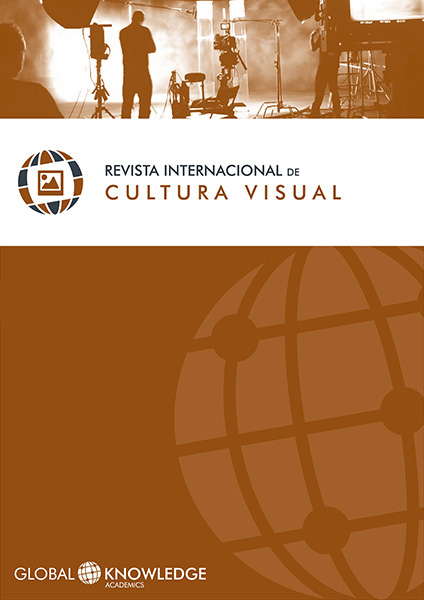Another Twist: The Abstract/Geometric Shapes as Evocation of the Venezuelan Identity
DOI:
https://doi.org/10.37467/gka-revvisual.v3.492Keywords:
Identity, Art, Abstract, Kinetic, Geometry, SensitiveAbstract
Identity and its various fragmentary meanings have resulted in a number of areas of use and emotional forms of acceptance and rejection in modern times. To speak of it in the contemporary world means to give another twist to a theme widely addressed within the artistic representations of the Venezuelan territory, as the expression of a speech metartistico built outside their fields of assemblage and which communicates interminably. The present formulation of Venezuelan art shows the ambiguity of a speech on/in the identity mobilized between the apparently foreign and simulated himself, as a sign of recognition, of their identity formulation; agents with which continually revisit the postulates of a hegemonic plastic in the 50 and 60 of the last century, through abstraction and kinetic, and how it is derivative in a sensitive, ephemeral spaces structural geometry and precarious releases in a volatile structures identity.
Downloads
Global Statistics ℹ️
|
491
Views
|
234
Downloads
|
|
725
Total
|
|
References
Candau, J. (2002). Antropología de la Memoria . Buenos Aires, Argentina: Nueva Visión.
García Canclini, N. (2005). Diferentes, desiguales y desconectados. Mapas de la interculturalidad. Madrid, España: Gedisa.
Guasch, A. M. (2001). El arte último del siglo XX. Del postminimalismo a lo multicultural . Madrid, España: Alianza.
Guasch, A. M. (2009). El arte del siglo XX en sus exposiciones. 1945-2007 . Madrid, España: Serbal.
Grimson, A. (2011). Los límites de la cultura. Crítica de las teorías de la identidad . Buenos Aires, Argentina: Siglo XX.
Guilbaut, S. (2009). Los espejismos de la imagen en los lindes del siglo XXI . Madrid, España: Akal/Arte Contemporáneo.
Jiménez, A. (2001). Ni aquí ni allá. En: Heterotopías. Medio Siglo sin Lugar: 1918-1968 . Madrid, España: Museo Nacional Centro de Arte Reina Sofía.
Llorens, T. (2001). Torres García y el mito del arte como utopía de salvación. En: Heterotopías. Medio Siglo sin Lugar: 1918-1968 . Madrid, España: Museo Nacional Centro de Arte Reina Sofía.
Otero, R. A. y Otero, S. A. (1999). Polémica sobre Arte Abstracto . Caracas, Venezuela.
Papastergiadis, N. (2005). Sur-sur-sur: una introducción. En: Alicia Zamora (Ed.), Enfoques a distancia sobre la producción de cultura en la situación contemporánea . San José, Costa Rica: Teor/ética.
Pérez Oramas, L. (1988). Armando Reverón o la crítica del impresionismo puro. En: Graciela Pantin y Roselia Level (Eds.), La cocina de Jurassic Park y otros ensayos visuales . Caracas, Venezuela: Fundación Polar.
Pérez Oramas, L. (1988). Armando Reverón y el arte moderno. En: Graciela Pantin y Roselia Level (Eds.), La cocina de Jurassic Park y otros ensayos visuales . Caracas, Venezuela: Fundación Polar.
Pérez Oramas, L. (1988). La isla enunciativa: isla reveriana. En: Graciela Pantin y Roselia Level (Eds.), La cocina de Jurassic Park y otros ensayos visuales . Caracas, Venezuela: Fundación Polar.
Salcedo, M. A. (2000). Armando Reverón y su época . Mérida, Venezuela: Dirección de Cultura y Extensión, Universidad de Los Andes.
Traba, M. (2005). Dos décadas vulnerables en las artes plásticas latinoamericanas, 1950-1970. Buenos Aires, Argentina: Siglo XXI.
Traba, M. (2005). Venezuela: cómo se forma una plástica hegemónica. En: Ana Pizarro (Ed.), Marta Traba. Mirar en América . Venezuela: Biblioteca Ayacucho
Downloads
Published
How to Cite
Issue
Section
License
Those authors who publish in this journal accept the following terms:
-
Authors retain copyright.
-
Authors transfer to the journal the right of first publication. The journal also owns the publishing rights.
-
All published contents are governed by an Attribution-NoDerivatives 4.0 International License.
Access the informative version and legal text of the license. By virtue of this, third parties are allowed to use what is published as long as they mention the authorship of the work and the first publication in this journal. If you transform the material, you may not distribute the modified work. -
Authors may make other independent and additional contractual arrangements for non-exclusive distribution of the version of the article published in this journal (e.g., inclusion in an institutional repository or publication in a book) as long as they clearly indicate that the work was first published in this journal.
- Authors are allowed and recommended to publish their work on the Internet (for example on institutional and personal websites), following the publication of, and referencing the journal, as this could lead to constructive exchanges and a more extensive and quick circulation of published works (see The Effect of Open Access).













